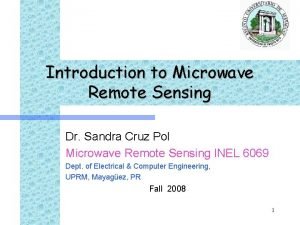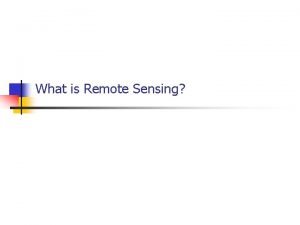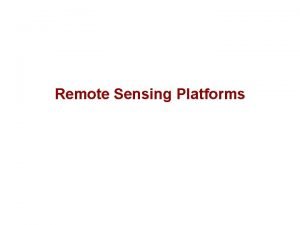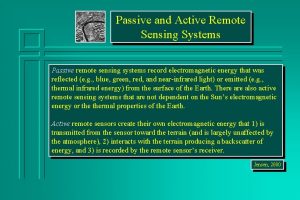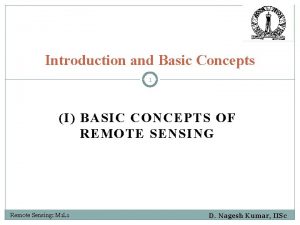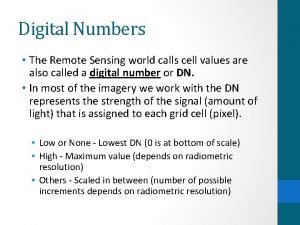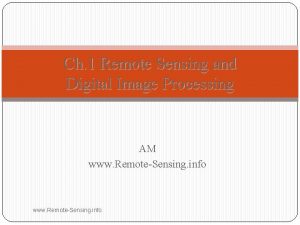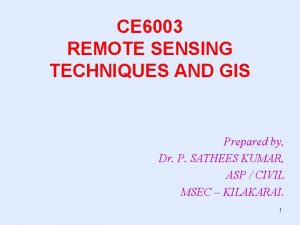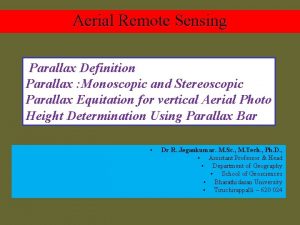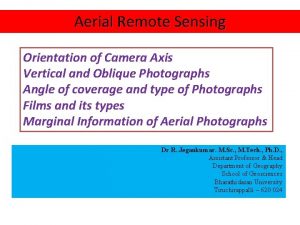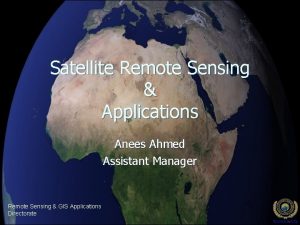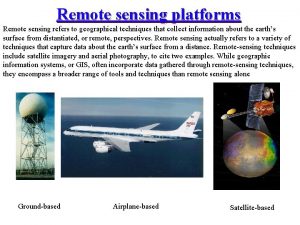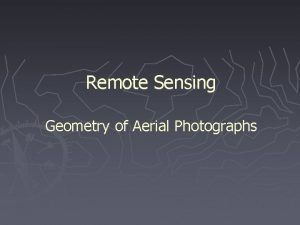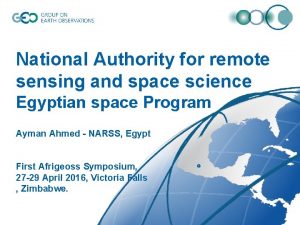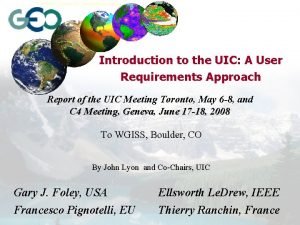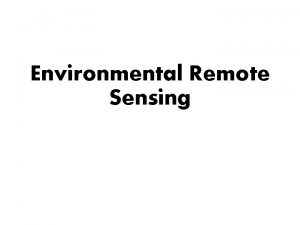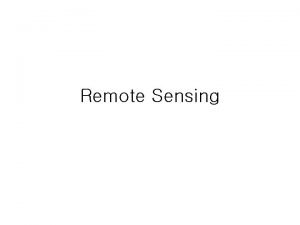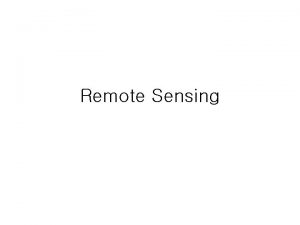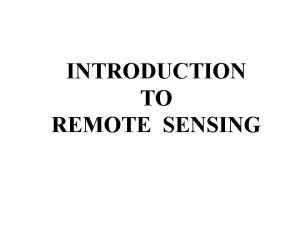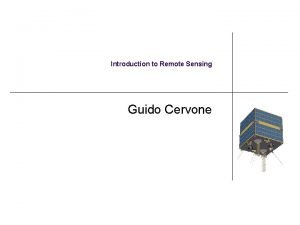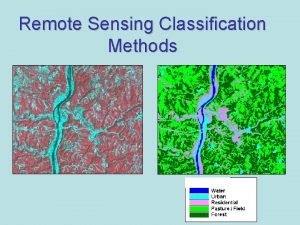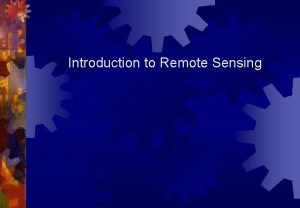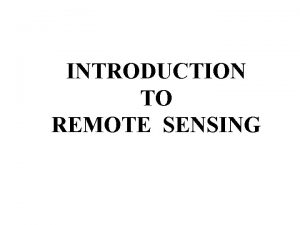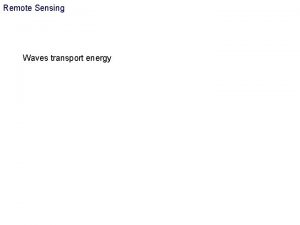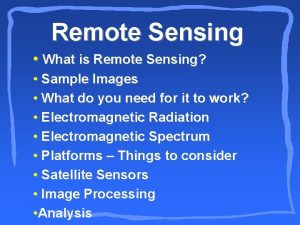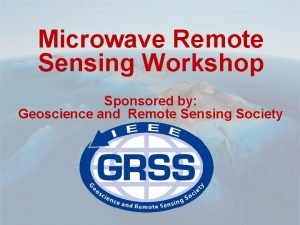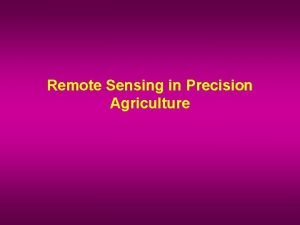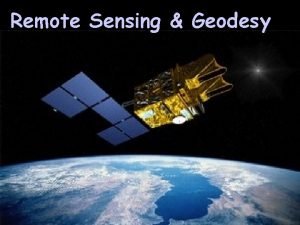Introduction to Remote sensing Introduction Remote sensing is
















- Slides: 16

Introduction to Remote sensing

Introduction �Remote sensing is the science (and to some extent, art) of acquiring information about the Earth's surface without actually being in contact with it. This is done by sensing and recording reflected or emitted energy and processing, analyzing, and applying that information.

Elements of Remote Sensing

Elements of Remote Sensing

Elements of Remote Sensing �Energy Source or Illumination (A): �– The energy source that illuminates or provides �electromagnetic energy to the target of interest.

Elements of Remote Sensing Radiation and the Atmosphere (B): – As the energy travels from its source to the target, it will come in contact and interact with the atmosphere. – This interaction may take place a second time as the energy travels from the target to the sensor.

Elements of Remote Sensing �Interaction with the Target (C): �Once the energy makes its way to the target through the atmosphere, it interacts with the target. �The interaction outcome depends on the spectral properties of both the target and the radiation.

Elements of Remote Sensing �Recording of Energy by the Sensor (D): �after the energy has been scattered by, or emitted from the target, we require a sensor (remote - not in contact with the target) to collect and record the electromagnetic radiation.

Elements of Remote Sensing �Transmission, Reception, and Processing (E): �– Recorded energy is transmitted, often in electronic form, to a receiving and processing station where the data is converted into an image (hardcopy and/or digital).

Elements of Remote Sensing �Interpretation and Analysis (F): �– Processed image is interpreted, visually and/or digitally, to extract information about the target which was illuminated.

Elements of Remote Sensing �Application (G): �– Apply extracted information about the target in order to: � • Gain better understanding of that object, � • Reveal some new information, or � • Assist in solving a particular problem.

Applications of Remote Sensing � a few of many… � • Agriculture, Forestry and Range � Identify crop, forest and rangeland types � Measure area � Assess condition and estimate yields � Monitor changes � • Water Resources � Lake water quality monitoring � Inventory and mapping of wetlands � • Urban Dynamics � Monitor land use and change

Uses of Remote Sensing n Weather: It is possible now to get immediate information on climate and weather conditions from remote sensing satellites. Images over time allow us to predict weather behavior.

Uses of Remote Sensing n Agriculture: Crop mapping and yield prediction; crop damage due to storm, drought or disease and insect outbreaks.

Uses of Remote Sensing n Burned and burning forest near Norman Wells, NWT , Canada Forestry Inventory: Remote Sensing used forest inventory, mapping cut-overs, forest fire mapping, species identification.

Uses of Remote Sensing n Syncline/Anticline structures in the Applachians of Pennsylvania. Geological Mapping: Mapping faults, folds, lineaments and rock types.
 Introduction to microwave remote sensing
Introduction to microwave remote sensing Limitations of remote sensing
Limitations of remote sensing Remote sensing platforms
Remote sensing platforms Passive remote sensing
Passive remote sensing Limitations of remote sensing
Limitations of remote sensing Digital number remote sensing
Digital number remote sensing Limitations of remote sensing
Limitations of remote sensing Idealized remote sensing system
Idealized remote sensing system Aggregation ap human geography
Aggregation ap human geography Remote sensing
Remote sensing Parallax in aerial photography
Parallax in aerial photography Strip camera in remote sensing
Strip camera in remote sensing Remote sensing image
Remote sensing image Ifov and fov in remote sensing
Ifov and fov in remote sensing Fiducial marks in remote sensing
Fiducial marks in remote sensing National authority for remote sensing and space sciences
National authority for remote sensing and space sciences Canadian centre for remote sensing
Canadian centre for remote sensing
